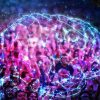Carl Jung, in his chapter “The Soul and Death” from Psychology and the Occult, offers a deeply contemplative examination of the inevitable intersection between life and death, urging us to reconcile these forces as part of a continuous psychological process. Unlike the typical view that death marks a strict endpoint, Jung expands on the notion that death serves a psychological and even transformative role for the human soul, urging us to prepare not only for life but for its cessation as well.
Jung’s insight resonates with the underlying themes of esoteric knowledge, a major focal point within the Maier Files series. As characters like Otto Maier delve into ancient truths, occult forces, and cosmic mysteries, they confront existential questions similar to those Jung posed about life, death, and what lies beyond.
The Psychological Meaning of Death
Jung begins by dissecting the common conception of death as merely the cessation of physical life, arguing instead that psychological preparation for death begins long before the actual moment. He states: “For twenty years and more the growing man is being prepared for the complete unfolding of his individual nature, why should not the older man prepare himself twenty years and more for his death?”
In this passage, Jung outlines the paradoxical reality that as life matures, death becomes not an enemy but a necessary counterpart to fulfillment. He suggests that death is as much a part of the human experience as birth, and that embracing this truth can lead to psychological wholeness. This mirrors the arc of Otto Maier’s journey in the Maier Files, where existential questions and psychological confrontations with mortality permeate the narrative.
Life as a Parabolic Arc
Jung uses a powerful metaphor to describe the arc of life. He likens it to the parabolic trajectory of a projectile, rising toward a peak before descending: “The curve of life is like the parabola of a projectile which, disturbed from its initial state of rest, rises and then returns to a state of repose.”
The notion that life, far from being linear, follows a natural curve, reflects an inherent balance in the universe—a balance that many characters in the Maier Files confront. The interplay between ascension, maturity, and the ultimate descent toward death is a consistent theme in the series, particularly as Otto Maier wrestles with alchemical and esoteric forces that challenge the natural order.
Death as Transformation, Not Annihilation
One of the most remarkable aspects of Jung’s view is his insistence that death should not be seen as the end, but rather as a transformation. Jung often refers to death as an event that is woven into the fabric of life itself, a crucial turning point: “From the middle of life onward, only he remains vitally alive who is ready to die with life. For in the secret hour of life’s midday, the parabola is reversed, death is born.”
This recognition of death as a necessary complement to life resonates profoundly with the mysticism of the Maier Files, where characters are often confronted with transformative events that involve death, rebirth, and otherworldly wisdom. The symbolic death and rebirth process Jung speaks of aligns with the esoteric undercurrents in the Maier Files, as Otto’s quest for truth leads him through symbolic “deaths” and resurrections of his understanding.
The Role of the Unconscious
Jung also delves into the role of the unconscious mind in preparing for death. He notes that dreams often signal the coming of death through recurring motifs of journeys, transformations, or changes in location. Jung writes: “As a rule, the approaching end was indicated by those symbols which, in normal life also, proclaim changes of psychological condition—rebirth symbols such as changes of locality, journeys, and the like.”
This insight suggests that the unconscious mind is constantly working to prepare us for the ultimate transition. In the Maier Files, dreams and visions play a crucial role in guiding characters, offering glimpses into the unconscious truths that shape their actions and decisions. Otto’s encounters with mystical figures like Gudrun are not just random but rather deeply symbolic of his psychological and spiritual evolution, leading him ever closer to understanding cosmic truths.
Death as the Soul’s Final Journey
Jung’s reflections in “The Soul and Death” challenge us to reconsider our relationship with mortality. Rather than a final point, death is seen as part of a natural cycle—a transformation that the soul must undergo. This perspective is vital not only in the realm of psychology but also for those who are fascinated by esoteric and occult philosophies, much like the world of the Maier Files.
If you are drawn to the psychological depths of human existence, where life and death are not opposites but complements, Jung’s Psychology and the Occult is an essential read. His profound insights on the psyche’s relationship with death will deepen your understanding of not only his psychological framework but also the mystical journey that runs parallel to the human experience.
Discover Carl Jung’s “Psychology and the Occult” on Amazon and embark on this transformative journey.




